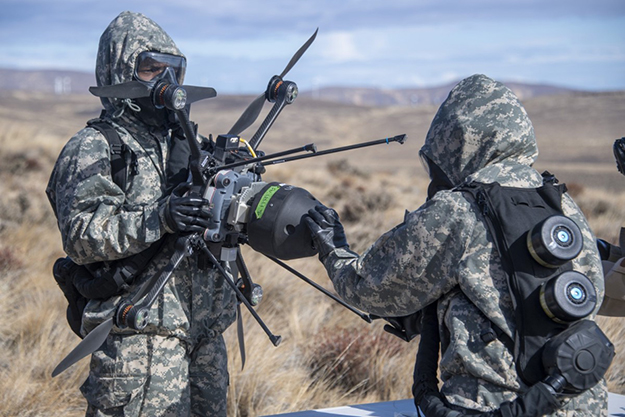YAKIMA TRAINING CENTER, Wash. - Soldiers from Joint Base Lewis-McCord have been taking part in operationally testing the new Sensor Suite Upgrade, or SSU, on the M1135 variant Stryker - the Army's high-speed, high-mobility, armored carrier.
Soldiers with the 1st Stryker Brigade Combat Team of 2nd Infantry Division and the 110th Chemical, Biological, Radiological and Nuclear Battalion are employing the Stryker Nuclear, Biological, and Chemical Reconnaissance Vehicle SSU along with testers of the U.S. Army Operational Test Command based at West Fort Cavazos, Texas.
The SSU supports the warfighter by performing NBC reconnaissance on the battlefield.
Its dedicated system of CBRN detection on a Stryker vehicle can locate, identify, and report NBC contamination to commanders.
"As a CBRN Reconnaissance Platoon, seldom are we presented the opportunity to focus on in-depth front-line reconnaissance, surveillance, warning and reporting, and identification of realistic CBRN threats," said 1st Lt. Kassi Gulliford, platoon leader of RECCE Platoon, Headquarters and Headquarters Company, 23rd Brigade Engineer Battalion.
"This operational test has given my platoon the opportunity to focus on our critical war-time collective tasks of mounted CBRN reconnaissance and surveillance, especially operating as crews," she added.
"The amount of hands-on training and employment opportunities with CBRN simulants we received, really gave all of us confidence in our capabilities with respect to our operational readiness as a mounted RECCE platoon."
According to Test Officer Joseph Scheerer of the USAOTC's Maneuver Support and Sustainment Test Directorate, test data and feedback collected informs senior Army leaders on effectiveness, suitability, and reliability of the SSU.
Scheerer explained during the four-day record test, the test players employed the sensors, detected, and identified CBRN threats, provided detailed warning and reports, and conducted decontamination of the systems over 16 varying targets.
"Mounted CBRN reconnaissance and surveillance operations are complex missions that requires our CBRN assets to remain equipped with systems that are effective and suitable in Soldiers hands," he said.
"This test event is about making sure the systems developed provide proper capabilities in the environments in which soldiers and units train and fight."





Read Comments